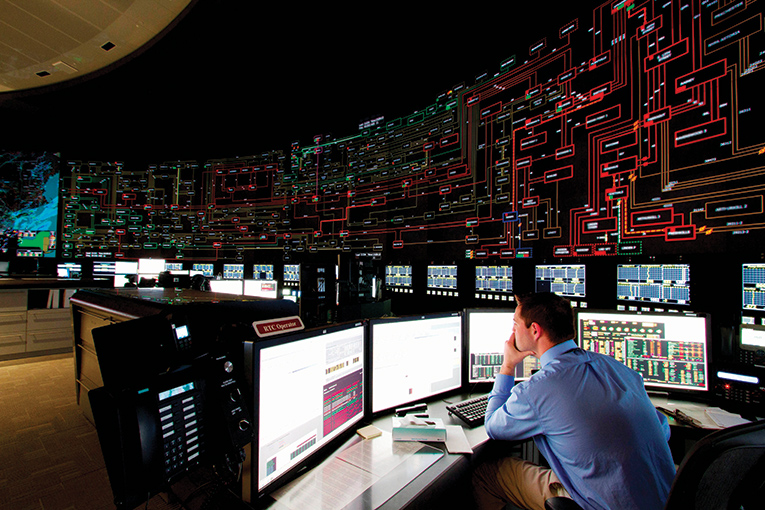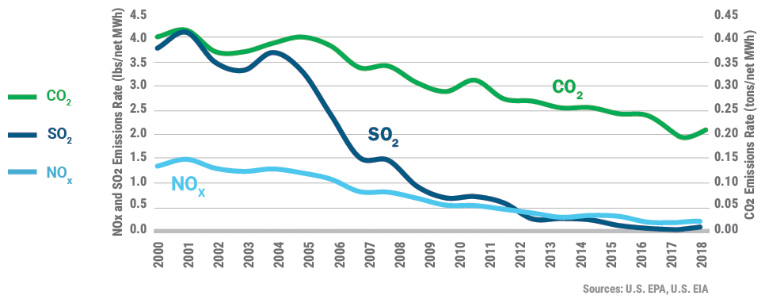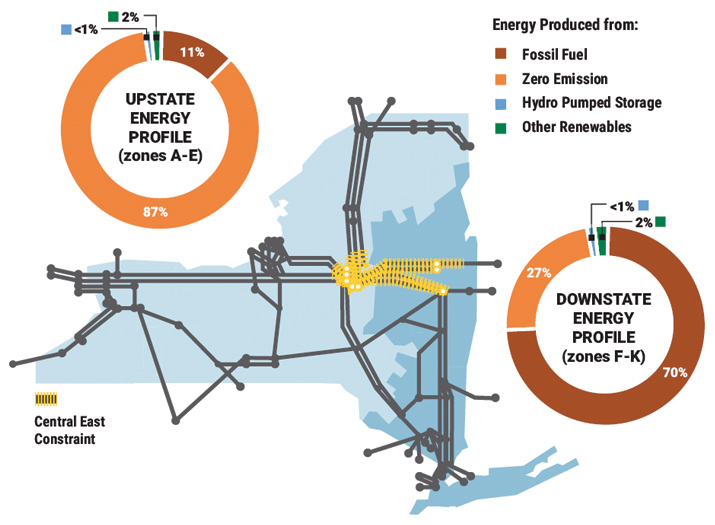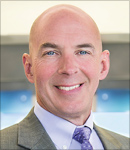For the Q4, 2019 issue, we spoke with Richard J. Dewey, president and chief executive officer of the New York Independent System Operator (NYISO). With a background in IT and network services, Dewey joined the NYISO soon after it was formed in 1999 and has held several pivotal executive roles before becoming its leader earlier this year.
EET&D – Gauging from recent press releases we’ve seen on NYISO, it looks like you’ve been quite busy.
RD – That’s correct, although it’s probably more accurate to say “even more than usual.” The changes taking place on the grid today are unprecedented in our 20-year history and reflect changes taking place around the nation and the world, as we see the continued impact of climate change and a variety of new energy innovations. When I was hired in 2000, at the end of a six-hour interview, our first CEO, Bill Museler, called me into his office and said, “Rich, we really want you to join the New York ISO. We have no idea what your title is going to be, and I can’t even tell you what you’re going to work on, but I guarantee that you will have fun.” He hasn’t stopped being right, and especially now – this is the most exciting time to be in the energy industry.
EET&D – Talk about how NYISO got to where you are today.
RD – As I mentioned, we’ve been in existence for nearly 20 years, since we began operation in December of 1999. But our history dates back to the creation of the New York Power Pool in 1965, after a blackout in the Northeast that affected 30 million people. The Power Pool managed the transmission of power across the state from 1965 to 1999, but the utilities still controlled generation. In 1999, following years of discussion and planning by the state government to introduce competition into the energy sector, the utilities divested themselves of generation, and the NYISO was formed to operate the grid and administer those markets independently from any commercial interests.

EET&D – The NYISO is seeking to put a “social cost of carbon” on the sale of wholesale energy. What is the rationale for this idea?
RD – We’ve got this vexing problem of climate change, and policymakers are looking for opportunities for the electric sector to help with solutions. We think that our markets are very well-positioned to respond to this new set of objectives, primarily through carbon pricing. It’s really just a matter of coming up with a new set of market rules to create pricing incentives so industry and developers can respond and react. We’ve been working on a plan to introduce carbon pricing into our markets for more than a year, and we’ve produced some significant studies that really show how this would benefit consumers and the environment.
EET&D – Can you explain how carbon pricing would work?
RD – Under the model, New York State sets a price on a ton of carbon dioxide emissions. This fee is paid by fossil fuel-burning plants based on the emissions they release, with the clearing price set by the last generator economically dispatched to supply the grid, which today is generally the most carbon-intensive resource online. The cleanest energy resources, such as wind and solar, would keep all of that clearing price because they have no emissions. Other, more efficient fossil fuel generators would earn this clearing price, minus the carbon fee they’d be required to pay based on their emissions. After our markets have been settled, the remaining carbon fee revenues would be returned to wholesale energy consumers, such as utilities, with the expectation that those revenues would be passed to retail consumers.

Emission rates from electric generation in New York, 2000 to 2018.
EET&D – What is the benefit of doing this?
RD – This approach creates a strong economic incentive, what we call “price signals,” which values cleaner energy production and drives investment in new, cleaner technologies like wind and solar. It promotes innovation, helping to encourage emissions reductions from existing fossil fuel units and potentially, expansion of existing clean resources. Of course, this proposal still needs to be approved by our stakeholders and federal regulators. But the reports we’ve commissioned to study the impact of carbon pricing show a benefit to both the environment and consumers.
EET&D – You mentioned “markets” as one of the key aspects of carbon pricing. Can you speak more about the role of markets on the electric grid?
RD – Yes. Markets have been wildly successful in reducing costs to consumers, which was the stated goal when we first began operating competitive markets back in 2000. The competitive nature of our markets has already resulted in significant reductions in greenhouse gas emissions. We’ve used our markets to make it easier to integrate energy from, for instance, large-scale solar, storage and distributed energy resources. Our markets provide the price signals to attract innovation and investment to the grid, where and when needed while encouraging our suppliers to maximize efficiency, which keeps prices low. Now, we’re seeking to use our markets to help solve the carbon emission problem. Our studies show we could achieve the greatest reduction in carbon emissions by counting on the natural efficiency of markets. It’s important to note that we went to our market participants on the carbon proposal through our shared governance process, and they asked us to pursue this. Most stakeholders have an intense interest in seeing this be successful.
EET&D – What are some of the other changes you see on the grid?
RD – One of the most dramatic things we’ve seen is a huge increase in the number of clean energy projects being proposed for interconnection to the grid. We just launched a new “class year” of proposed grid-based projects, and we have nearly 120 proposed projects. Almost all of them are renewable or storage-based resources. During our last interconnection “class year” process, we had only 27 proposed projects, and most of them were more traditional forms of generation.
EET&D – What considerations do you have to take into account as you move toward a grid that relies more and more on renewables?
RD – Not surprisingly, the biggest concern is the intermittent nature of solar and wind resources. We saw several instances on high-load days last summer, where the biggest demand occurred in the evening when the sun was down, and the wind had stopped blowing. We value reliability above any other aspect of operating this grid, and we can't lose sight of that. We’ve got to make sure that we can operate this system to the highest reliability standards. We’ve made great inroads into energy storage, most recently by proposing changes to our markets to allow the participation of smaller battery storage projects. Though it is growing, storage can only go so far. It’s important to get the public to recognize the limitations of renewables for continued reliability and the importance of having fast-ramping and stable sources of power generation to meet changing demand.
EET&D – Can you give us a picture of how the New York State grid looks? What are some of its more unique attributes?
RD – New York’s grid really is a Tale of Two Grids. There is a distinct difference between the fuel mix generating power upstate, which is about 90 percent zero-emission sources such as nuclear, hydro and wind; and downstate, which is about 70 percent fossil fuel-fired. We are pursuing upgrades to the grid to help more of the clean energy produced upstate get delivered to downstate load centers. We set a record for peak demand of 33,956 MW in 2013 and haven’t hit it since. A primary reason for that is related to patterns of usage and energy efficiency. We’re seeing relatively flat load forecasts on a statewide basis, though the load downstate is actually increasing. That dichotomy underscores the need to move power from upstate to downstate.

EET&D – What are the impacts on transmission?
RD – We’ve just approved plans for the biggest transmission upgrades in a generation. One project is dedicated to increasing the flow of hydropower from the Niagara region to the east. The other project is dedicated to moving power from upstate to the state’s largest population center, New York City and its suburbs. This would have the additional benefit of taking maximum advantage of our upstate wind resources, which sometimes needs to be curtailed due to lack of transmission capability.
EET&D – What are some of the other changes taking place in the NYISO that reflect the changing nature of the electric grid?
RD – We’re doing lots of internal work in that regard. Our IT department has made several changes, embracing an Agile Development model to make our software more nimble and adaptable and to speed up the process of developing programs. We’re making additional use of cloud computing, most notably in our planning department. Planning runs numerous computer models to determine future impact of new generation and retiring generation on the grid, and those models require some serious computer power. We’ve realized the limitations of hosting this work in our on-site processors. Moving to the cloud takes advantage of this near-limitless processing power. It also reduces our cost because we don’t have to host additional infrastructure. Additionally, we've increased our cybsrecurity vigilance, and now, we have a 24-hour staff dedicated to nothing but computer security.
In another vein, our planning department is working on changes to our interconnection approval process – the “class year” process I spoke of earlier. With all the new projects in the queue, we have made changes to speed up the review and approval process by making sure proposed projects that need additional studies don’t hold up the projects that are ready for approval.
We’ve also done more work to make renewable energy more predictable. For instance, we’ve partnered with other organizations to invest in technology that can do a much better job of predicting how much solar and wind energy will be created over a day, allowing us to prepare for the ups and downs of energy based on nature.
EET&D – What is the NYISO’s thoughts on offshore wind?
RD – Well, as we consistently say, we are “fuel-agnostic.” Our primary concern is reliability. That being said, the state has made clear its interest in pursuing offshore wind, and we recognize it has tremendous possibilities. Its location near the state’s largest load center and most fossil-fuel intensive region of the grid has the potential to create tremendous value from an energy and environmental perspective. The challenge is going to be connecting it – you're 30-some miles out into the ocean, so how do you get that power back to the shore? Building out that transmission infrastructure is really new technology. They've done some of it in Europe, and we're looking at how they do that to see what lessons we can learn. We also want to understand the cost of the required transmission.
EET&D – What does the NYISO do to prepare for the future?
RD – If we’re going to meet these ambitious renewable goals, we need to create a market where people want to invest in fast-ramping units so we can have that on reserve to meet those intermittent situations. Being able to respond quickly is going to be so much more important in managing what is going to be a more complicated grid. We need our markets to provide a sufficient amount of revenue to those power plants that are necessary to maintain reliability as renewable resources expand.
We have a huge opportunity to make a difference. Our work at the NYISO is about as important as anything to our economy and to the safety and welfare of the people in New York. A new hire who just graduated from college came into my office recently to tell me, “This is the best job in the country.” That’s what I want every employee at the NYISO to feel every day when they walk out of this building.

Richard Dewey is a 19-year veteran of the NYISO. Dewey joined the NYISO in 2000 and has held several pivotal executive roles in product and project management, strategic software development and quality assurance. Previously, he spent several years in IT and network services for Husky Injection Molding Systems and Niagara Mohawk Power Corporation. He earned a B.S. in electrical and computer engineering from Clarkson University, an M.S. in computer engineering from Syracuse University and is a graduate of Harvard Business School’s General Management Program.







